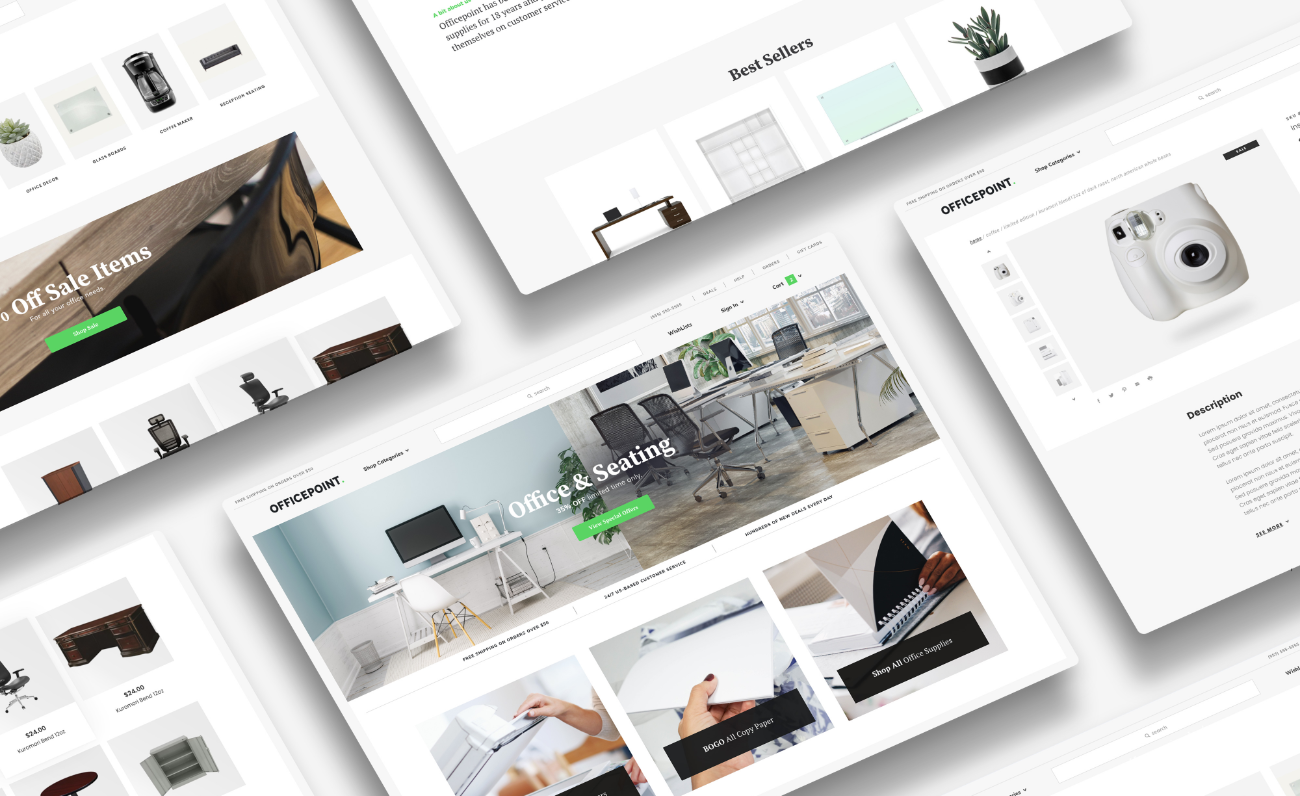By Miva | October 15, 2019

See why top ecommerce brands use Miva’s no-code platform to run
multiple stores, manage massive catalogs, and grow their revenue.
Last time we got together to chat about Miva 10, we shared with you some of the UI changes we have planned for our platform’s next iteration.
Behind these changes are a set of principles we developed that have guided our development process. These principles are illustrated both in how we design the platform and our approach to the interface and experience. Now we’re turning those principles over to you.
These design principles aren’t just handy guidelines for how to establish a backend environment. They also have universal applications that you can leverage to design a spectacular user experience for your customers. Without further ado, let’s dive into these principles.
Why It Matters to Miva 10
Our current interface presents a lot of data to our users and, by applying this principle, we found an opportunity to optimize the way it’s displayed. In Miva 10, we place the most relevant tools at the forefront, creating clear areas for users to focus on.
How You Can Apply It
With any ecommerce website, the goal is to make choices easy for shoppers. A bloated user experience can throw hurdles in front of your customers that can distract them from completing their purchase.
Rearrange and consolidate actions that your customers use often into an interface, like a dashboard or panel. This helps buyers find what they are looking for on your website and focus on one important action at a time, ultimately increasing your conversion rates.
Why It Matters to Miva 10
Within those prioritized information spaces, we simplify the possible actions into three main categories: primary, secondary, and overflow. This structure allows us to point users to where they need to go without overwhelming them with unnecessary functionality.
How You Can Apply It
Let’s look to computer scientist Alan Key for some sage advice: “Simple things should be simple, complex things should be possible”. The translation? Shoppers do not spend time on unnecessary operations, but they want the functionality to exist in case they ever need it.
Take this approach by simplifying actions on your website. For example, consider decreasing the steps in your purchase process and providing simple navigation menus while maintaining complex functionalities like faceted search. Having fewer visible features helps reduce cognitive load on the user and allows them to intuitively determine the actions they need to take.
Why It Matters to Miva 10
With Miva 10 we want to establish a “fresh-yet-familiar” backend experience for our users. To make the interface easy to pick up, we chose to adopt universal usability patterns seen in other applications.
How You Can Apply It
Some design elements are considered best practices for a reason. Upon landing on your page, many shoppers need some guidance to begin their path to action. Familiar elements like alignments, grids, and cues can acclimate buyers and help them to develop a positive first impression of your brand.
For inspiration, look at the UI and UX of some of your favorite websites. What are some common design elements that lead you through the site? Lean on these examples as inspiration for making your website more comfortable, engaging, and satisfying to your customers.

Why It Matters to Miva 10
Collaboration lies at the core of any effective ecommerce platform. By creating views and dashboards for different team members and incorporating profile photos, we wanted to facilitate collaboration within ecommerce teams and help them achieve the same goal.
How You Can Apply It
When designing your website’s user experience, you want to take into account every possible “user” that can influence the actual purchaser. This could include their family members, friends, and businesses—in essence, the buyer’s “team members”.
Features such as account-based settings, user-generated content and wish lists make it easy for every type of user to engage with your site and impact the bigger picture.
Why It Matters to Miva 10:
This is where things get personal: we wanted to add some friendliness and personality in Miva 10. This meant changing up our design and content to be a bit less matter-of-fact and more personable.
How You Can Apply It
No matter what you’re selling on your website, your customers should be able to identify and relate to your brand. Your user interface helps shoppers to determine whether your site is friendly, modern, experimental, luxury, and so on.
Why is this important? Your customers’ perception informs how they interact with your site, aligning their actual usage with your intended usage. Elements like compelling product descriptions, engaging videos, and personalized content can differentiate your brand and your products from your competitors. Illustrations, colors, and visuals also solidify your image.

As we continue developing newer and better solutions for online sellers, we’ve learned that user experience plays a major role in defining the capabilities of a business. With Miva 10, we didn’t want to update for the sake of updating—we wanted to improve the core functionality of the interface, making it even clearer and easier for our users than it already is.
We hope these principles will help you design a strong UX that reflects the kind of experience you want to provide for your customers and unleashes your business’ potential.

Love it? Share it!
No worries, download the PDF version now and enjoy your reading later...
Download PDF Miva
Miva
Miva offers a flexible and adaptable ecommerce platform that evolves with businesses and allows them to drive sales, maximize average order value, cut overhead costs, and increase revenue. Miva has been helping businesses realize their ecommerce potential for over 20 years and empowering retail, wholesale, and direct-to-consumer sellers across all industries to transform their business through ecommerce.
Visit Website